Adventurous Kate contains affiliate links. If you make a purchase through these links, I will earn a commission at no extra cost to you. Thanks!
Did you know that there is still a little island in North America that is still technically part of France? Visiting St. Pierre and Miquelon is one way to scratch that francophile itch as you explore Atlantic Canada!
I visited this quirky little place last summer and was quick enchanted. It’s the kind of place that feels so removed from the rest of the world, penned in by isolation and harsh weather, populated by hardy survivors.
St. Pierre and Miquelon is a self-governing territorial overseas collectivity of France (also known as a collectivité d’outre-mer or COM). Two of France’s other overseas collectivities are French Polynesia and St. Martin. Unlike those two, however, you’ll need a warm, waterproof jacket, even in July!
Most visitors plan a trip to St. Pierre and Miquelon as part of a larger Newfoundland trip — it’s just 25 kilometers (19 miles) off the Burin peninsula on the southern coast of Newfoundland in the north Atlantic ocean. But as soon as you step on shore, there remains no doubt in your mind that you’ve arrived in France.
So why come here? Well, if you’re a francophile and nature lover like me, no explanation is necessary. Step off your boat onto this beautiful, stark, and cold island, and see a version of France you’ve never experienced before.
This post was last updated in April 2023.
Table of Contents
Note: I visited St. Pierre and Miquelon on my Eastern Canada trip with OneOcean Expeditions, who hosted me in full. While I adored this trip, things at OneOcean have gone downhill since then.
OneOcean didn’t pay many of the crew on my trip. Some of their scheduled Antarctica voyages didn’t happen, leaving passengers stranded in Ushuaia. Lots of employees quit, including the people on the PR team with whom I worked.
The last we heard, the ship was in an incident with a Venezuelan Navy vessel in the Caribbean.
My experience was wonderful, but due to the company’s recent actions, I do not recommend traveling with OneOcean Expeditions.
St. Pierre and Miquelon Map
St. Pierre and Miquelon lies just off the southern coast of Newfoundland, Canada, near the city of Fortune. The smaller island of Saint-Pierre is where most of the population lives; the island of Miquelon (also called Grande-Miquelon and Langlade) is far more rural.
History of Saint-Pierre
As you may expect, St. Pierre and Miquelon have had an…interesting history.
While the islands are a vestige of France today, they weren’t always. They were originally a French settlement (Jacques Cartier stopped on his second voyage and gave them their name) but the British also had control of the islands several times – in 1713, 1778, 1794, 1803, and 1815. Since 1816, the islands have been a French Territory. When the Treaty of Paris passed in 1763, St. Pierre and Miquelon were the only North American territories except for Louisiana that were left under French control and then later, in 1958, the citizens chose to remain a French overseas territory.
In more recent history, the two islands played a role in the rum trade with the infamous Al Capone and other mobsters using the islands to smuggle liquor into the United States during the Prohibition!
Today, the islands have a total population of just under 6 thousand spread across 93 square miles. The entry requirements vary from country to country but Americans and Canadians need just a passport.
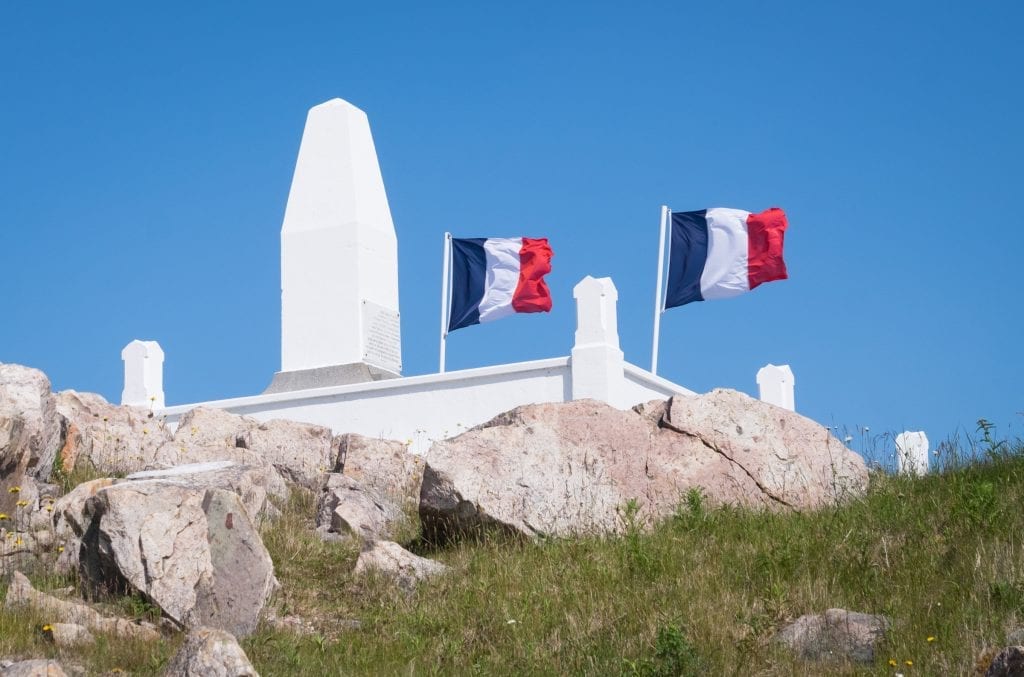
Things To Do Know About St. Pierre and Miquelon
Yes, you’re in France!
You’re just off the coast of Canada, but believe me, you will know you are in France as soon as you dock. The tricolor flags, the voices, the baguettes – you’ll definitely find some things that make you feel like you’ve stepped onto mainland France. When we arrived at the ferry terminal, a man in a beret welcomed us, singing and playing an accordion.
While the rocky, windswept landscapes are similar to what you see in the Newfoundland coast, there are things you should know before stepping on shore:
St. Pierre and Miquelon is in a different time zone. The time zone is GMT-2, putting it 30 minutes ahead of Newfoundland, one hour ahead of Nova Scotia, and two hours ahead from New York. Be sure to keep the time difference in mind when looking at ferry schedules!
The currency is the euro. Though many places accept Canadian dollars too. (Prices in this guide are converted to US dollars.)
The island shuts down for lunch. From 12:00-2:00 PM, almost all shops close on the islands as everyone takes a break for lunch.
The island especially shuts down on Sundays. Some of our friends on the crew complained that they had only visited St. Pierre on Sundays, and everything was closed!
It’s behind the times technology-wise. Many tourism businesses don’t have an online presence; instead they rely on bookings from the tourism center. While I usually research and book activities independently, I encourage you to explore the St. Pierre and Miquelon tourism site, or even call them on the phone (!!) to book your activities.
Locals speak the French language as their primary language but many speak English as well.
There are a surprising number of things to do on these small islands! I highly recommend checking out the quirky museums, hiking, and going on a boat trip.
Most people add St. Pierre and Miquelon on to a larger trip to the island of Newfoundland and arrive via ferry from Fortune. You can also arrive via plane from a few cities in Canada and France.
A few days is the perfect amount of time to spend in St. Pierre and Miquelon. It will give you plenty of time to see the sites on St. Pierre, do a bit of hiking, and visit Miquelon.
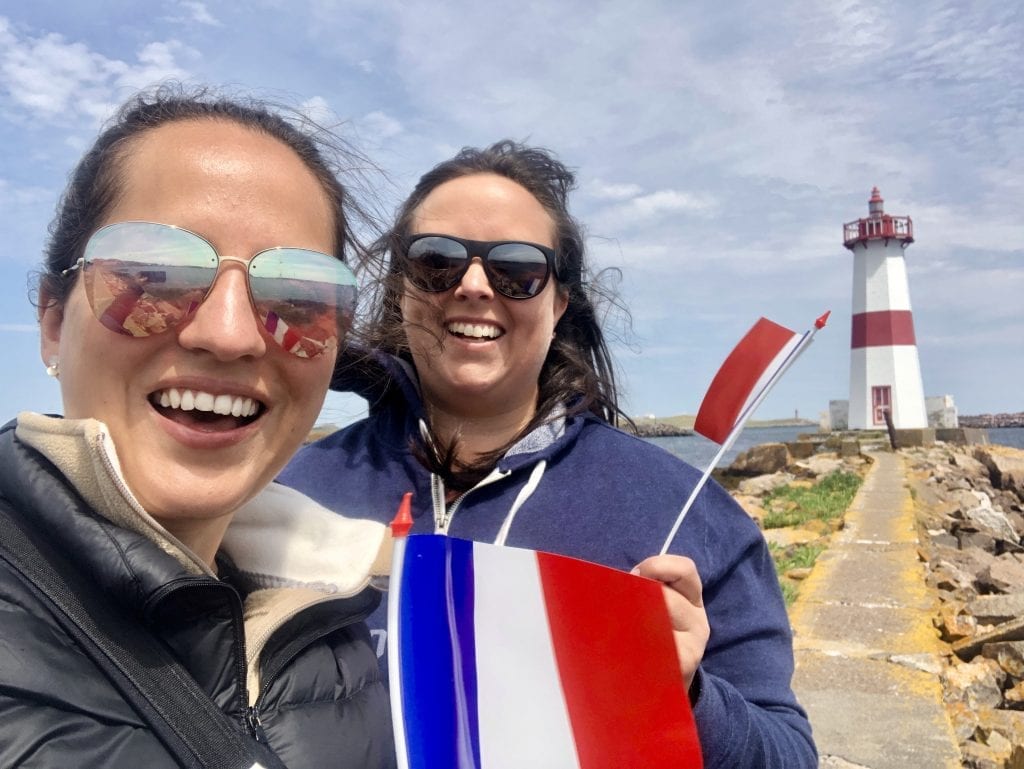
Arriving in St. Pierre
St. Pierre was one of the destinations I was looking forward to the most on my Eastern Canada cruise. Cailin and I arrived in the morning, did an excursion to the wonderful Île Aux Marins, skipped out on a zodiac trip to see puffins (we had done a LOT of zodiac trips to see puffins over the last week), and made plans to hit the town.
There was only one issue — it was almost noon, and our ship was docked a 25-minute walk from town. St. Pierre shuts down at noon, and literally everything is closed except for restaurants until 2:00 PM or later. But it goes further than that: if you want to eat in St. Pierre, you need to be in a restaurant PROMPTLY at noon, or you may miss eating entirely. This may be more French than France itself.
How were we supposed to get to town in time?!
We stepped off the ship…and saw a young woman driving a car, turning it around in the parking lot.
“Madame, pardon!” I yelled as we ran toward her. “Est-ce que c’est possible que nous pouvons aller á la ville avec vous?”
The woman was speechless — two crazed, wild-eyed foreigners trying to hitch a ride in her ancient, trash-filled car? But she accepted and we got in, Cailin in the front, me in the back. My door didn’t have a handle; I had to shut it by pulling the window.
Cailin offered her 5 euros left over from our Italy trip; she refused, laughing. She dropped us off in the center of town and pointed us toward a restaurant, Le Feu de Braise.
It was 12:06 PM. We had arrived just in time. By 12:10, the restaurant was full.
Cailin ordered a cold lobster with mayonnaise, thinking she would get a lobster roll. I ordered a steak “a point” (medium) then asked, in English, if it could be medium rare.
“Medium or rare is possible, not medium rare,” the waiter replied.
“Okay, rare then,” I said.
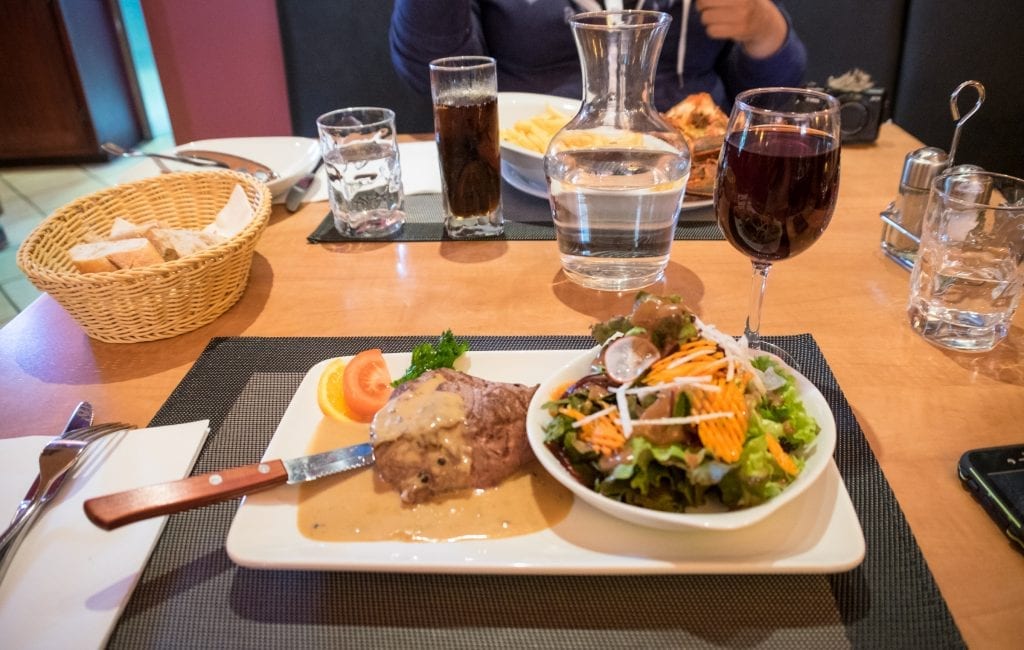
Rookie mistake — when the French go rare, they go RARE. Order a rare steak in America and it will have a juicy red center. Order a rare steak in France and it will be bleu. Still…
As for Cailin, her cold lobster with mayonnaise was quite literally a cold lobster served with a ramekin of mayonnaise.
Both stuffed, we set out to explore the town.
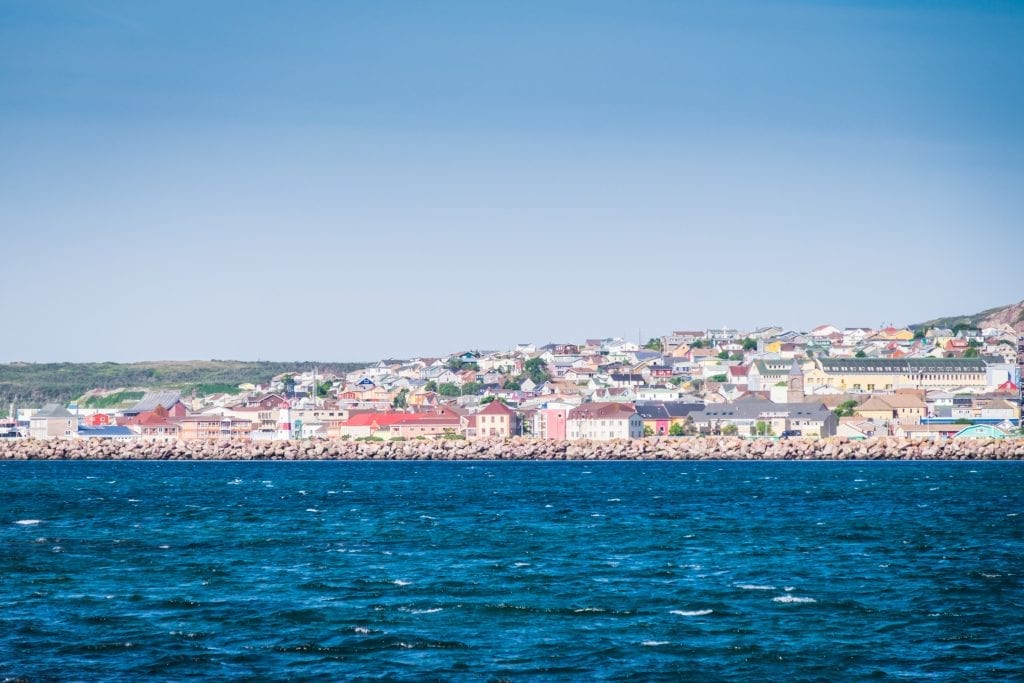
Best Things to Do in St. Pierre and Miquelon
At first glance, it might look like there aren’t a ton of things to do in St. Pierre and Miquelon. I mean, you’re not in Paris. But between enjoying the quirky city and getting out into nature, there’s lots to enjoy in this unique archipelago.
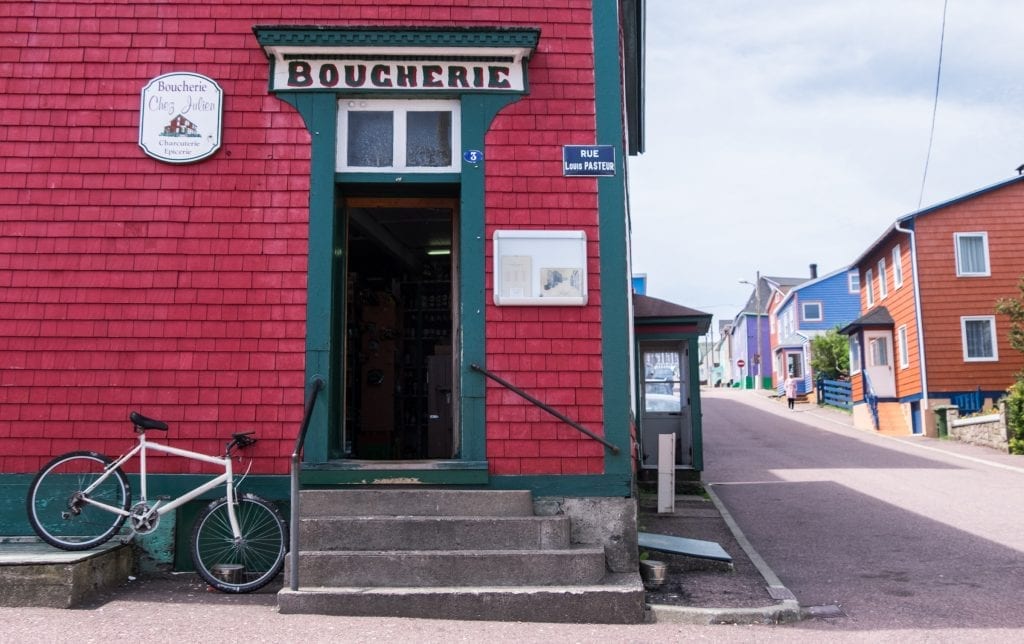
Enjoy being in France!
Don’t make the mistake of saying that St. Pierre is “just like” France — locals will promptly correct you that you are in France, chérie. Get some cheese. Eat a baguette (Boulangerie David Girardin has some great baguettes). Do your best impression of Pierre Escargots. Ho ho! Ho ho!
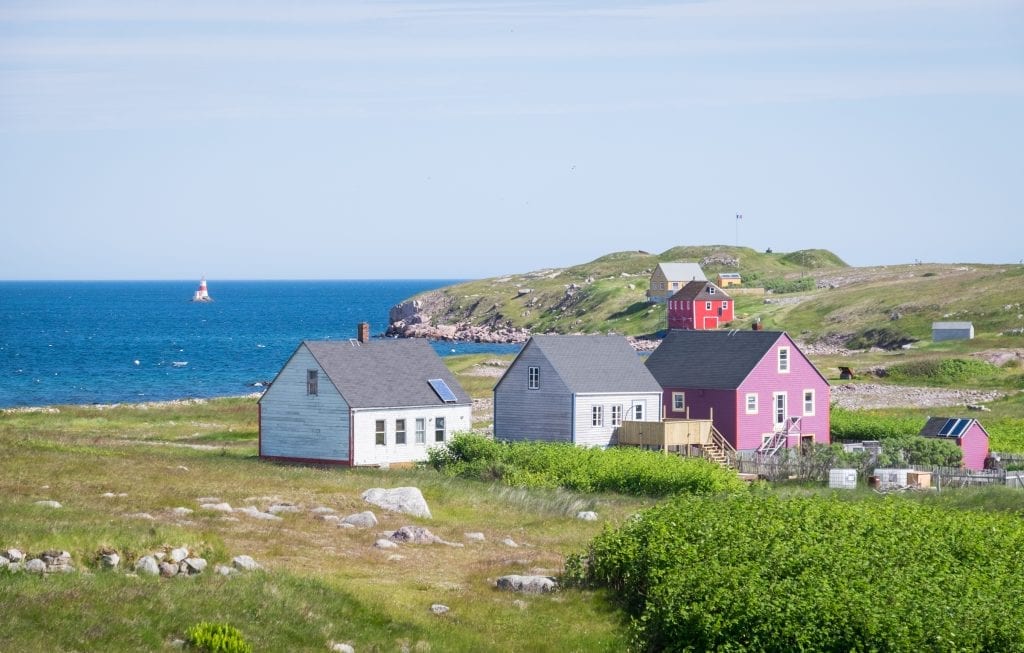
Visit Île aux Marins
For me, the highlight of St. Pierre and Miquelon was visiting Île aux Marins — Sailors’ Island, sometimes called Pioneers’ Island. This small island off the coast of St. Pierre was a commune for 300 years until it was annexed by St. Pierre in 1945. There was no electricity until 1963!
Today Île aux Marins has no permanent population, but some locals have summer cottages here. You can walk around and enjoy the beautiful coastline and brightly painted houses, views of St. Pierre in the distance. The Archipélitude Museum is a must-visit and the church is lovely, the religious imagery adorned with boats.
The ferry from St. Pierre to Île aux Marins runs every two hours in the summer months. A round-trip journey is 6 EUR ($7) for adults and 4 EUR ($4.50) for children and seniors.
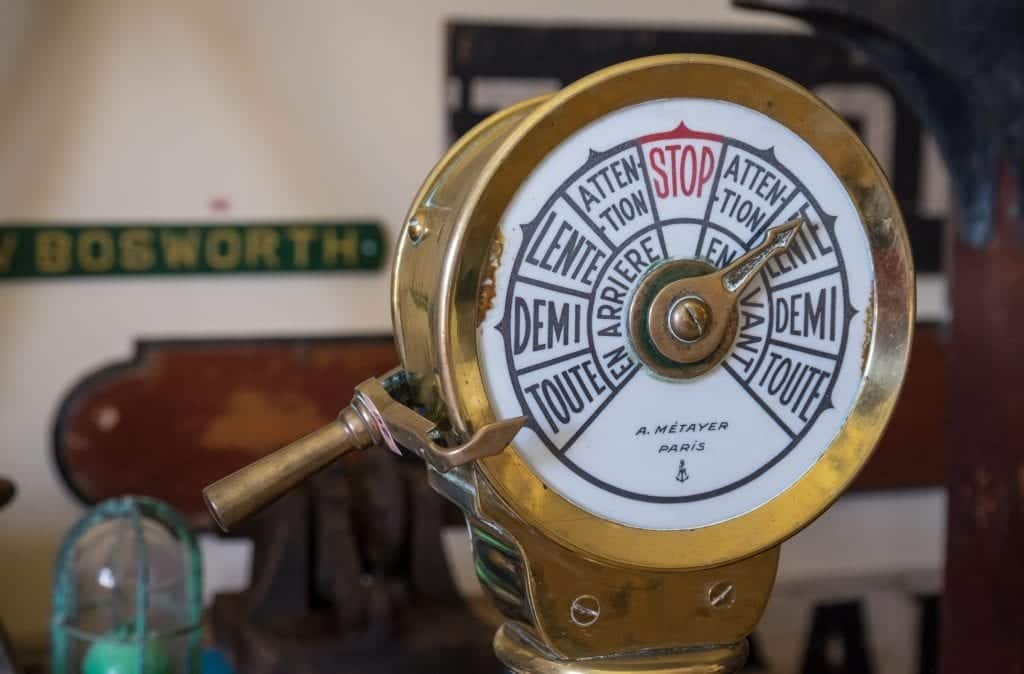
Visit the Archipélitude Museum
I am a huge fan of small niche museums — the more obscure, the better. The Archipélitude Museum on Île aux Marins is a wonderful place to visit. It’s set in an old schoolhouse and filled with artifacts of the island’s history — lots of seafaring equipment, letters, artwork, and more.
Admission is 5 EUR ($5.50), half price for seniors and children, and there are also guided tours departing from the mainland.
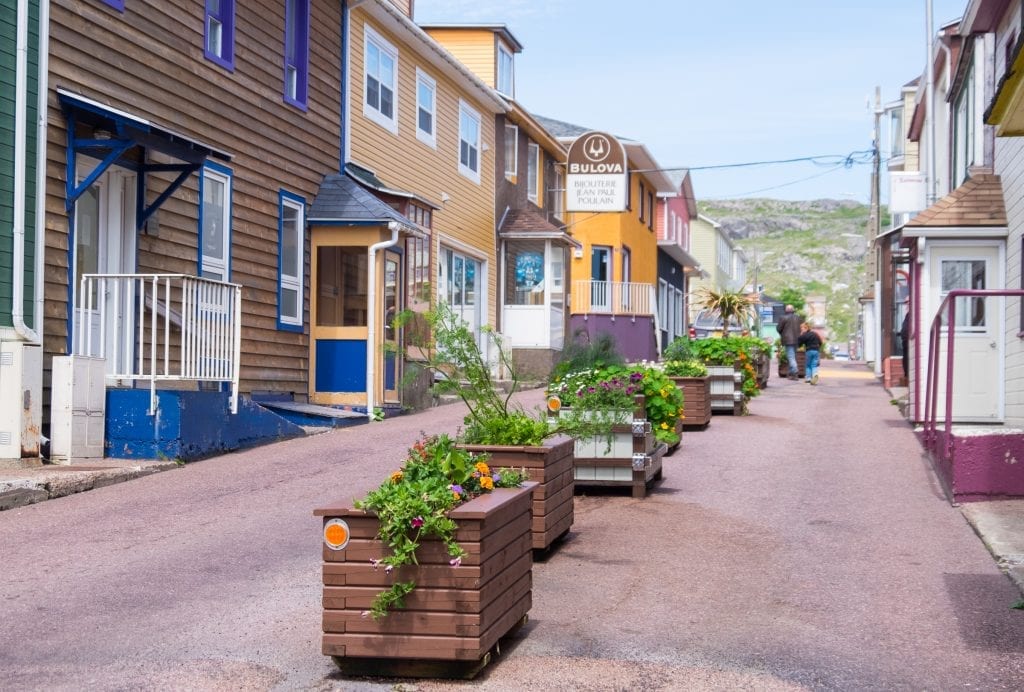
Explore Downtown St. Pierre
St. Pierre is so different from everywhere else I’ve been in Atlantic Canada, even the parts of seaside Québec that I’ve visited. The city is brightly colored, filled with flowers, and feels much more European than its Canadian counterparts.
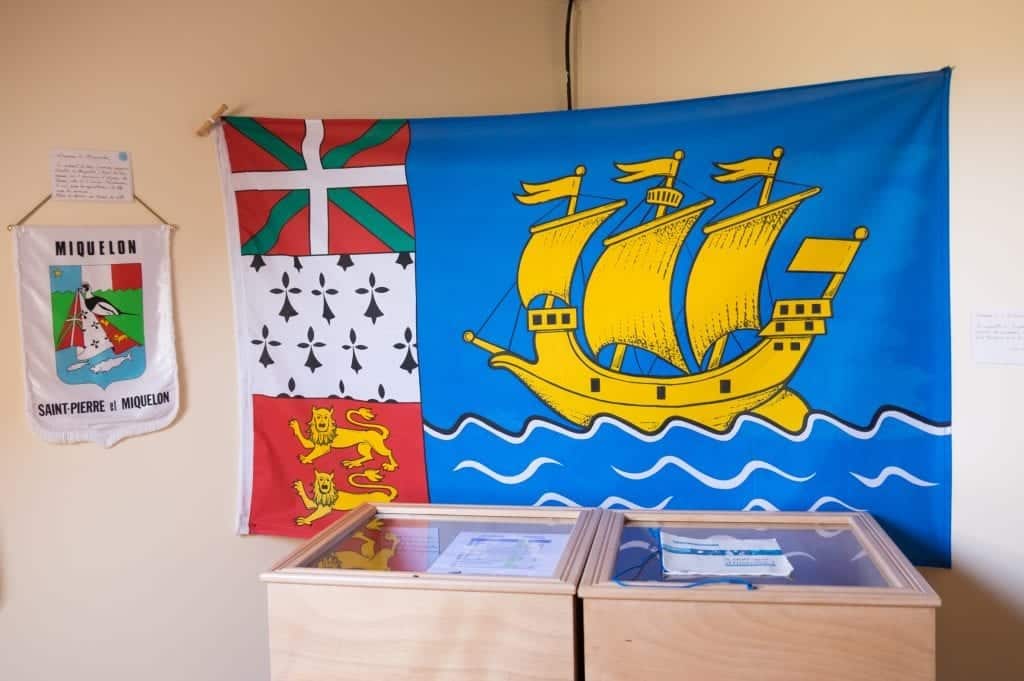
Musée de l’Arche
Located right on the waterfront, the Arche Museum (Musée de l’arche) is a wonderful place to learn about the history and culture of St. Pierre and Miquelon. However, it’s all in French. You can enjoy the exhibits — including an actual guillotine — if you can only read a little bit of French, but if that sounds like a nightmare, it’s probably not for you.
Admission is 7 EUR ($8) for adults; 5 EUR ($5.50) for children and seniors. Tours are available for a few euros more.
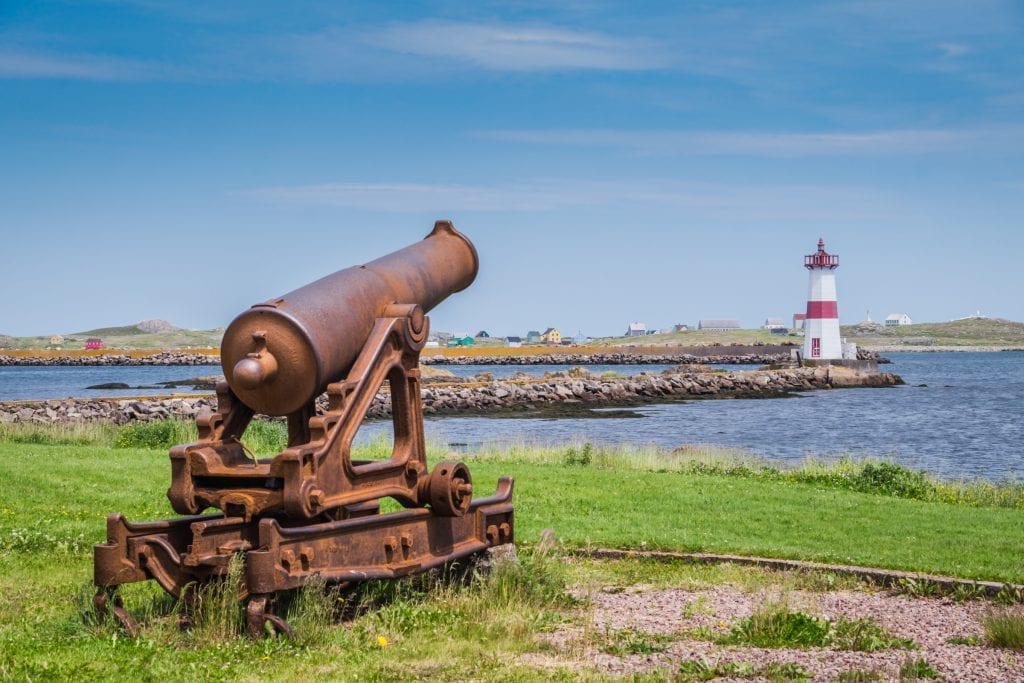
Tour the island of St. Pierre
Touring St. Pierre with a guide can give you a great insight to this peculiar little destination
Le Caillou Blanc offers group van tours that cover the island of St. Pierre, as well as customized private tours and services.
Frenchi’s Tours offers individual tours of the island, including packages with lodging and arrival packages.
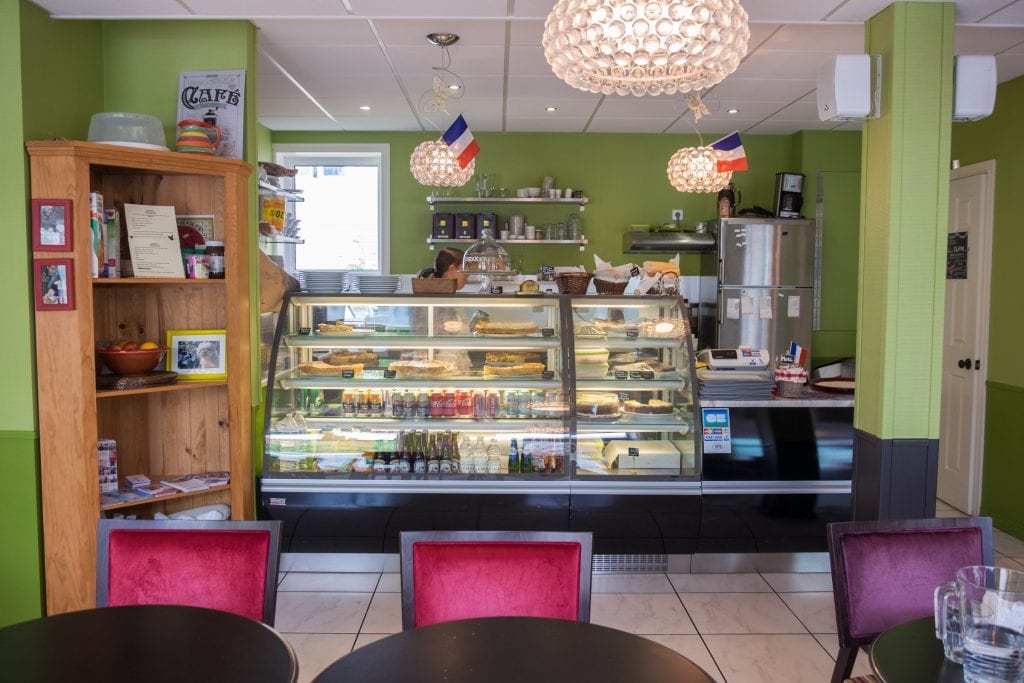
Have some tea at Les Delices de Joséphine
We did manage to find one establishment that defies the rules of St. Pierre — a cafe that actually serves food outside the strict meal times (whaaat?) and stays open through lunch each day. Les Délices de Joséphine is a lovely place to grab a cup of tea and a pastry, as well as a light meal.
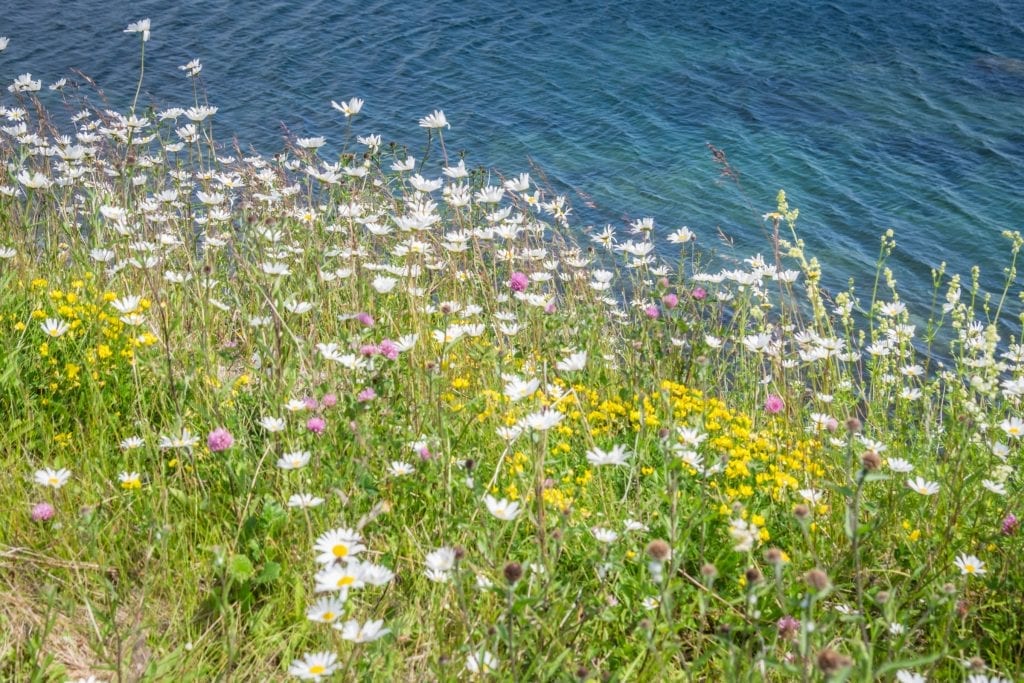
Go Hiking
If you like to hike, you’ll have plenty of options in St. Pierre and Miquelon! This is the best way to experience nature and get to know the rocky geography of the islands. There are hikes for all levels.
Here’s a directory of hiking trails in St. Pierre and Miquelon.
(Please let me know if you go hiking in Anse de Belliveau in Miquelon. It was likely named after my Belliveau ancestors, who immigrated from France to Canada in the early 1600s.)
Beyond that, see a complete list of nature activities here.
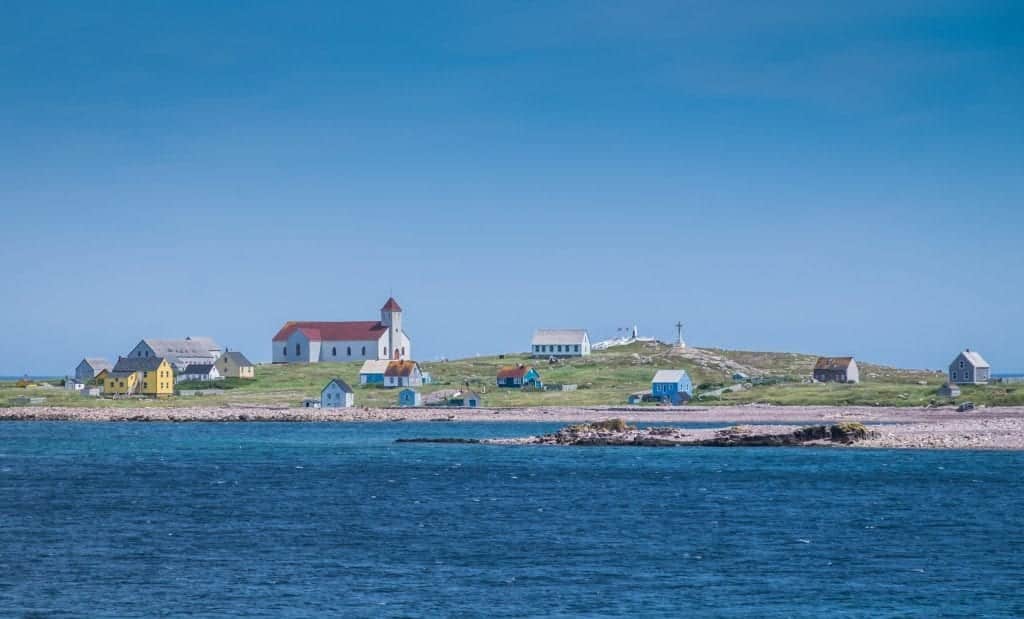
Take a Boat Trip
There are so many nature tours available on St. Pierre! Get out on the water to enjoy the geography and wildlife.
Take a dory tour with Les Zigotos. Explore the surrounding area on a traditional wooden dory painted in Basque colors. This is more of a cultural tour.
Explore the island by zodiac. Put on your waterproof jacket, get into a rubber boat, and zoom off to visit puffin colonies and maybe even spot some whales!
Take a wildlife cruise to Grand Colombier. This island is home to a natural migratory bird reserve, and you can see some of the best wildlife in the archipelago here.
Take a boat tour to Cap Percé. On this trip you can admire the rock formations of the island and maybe even spot some island deer!
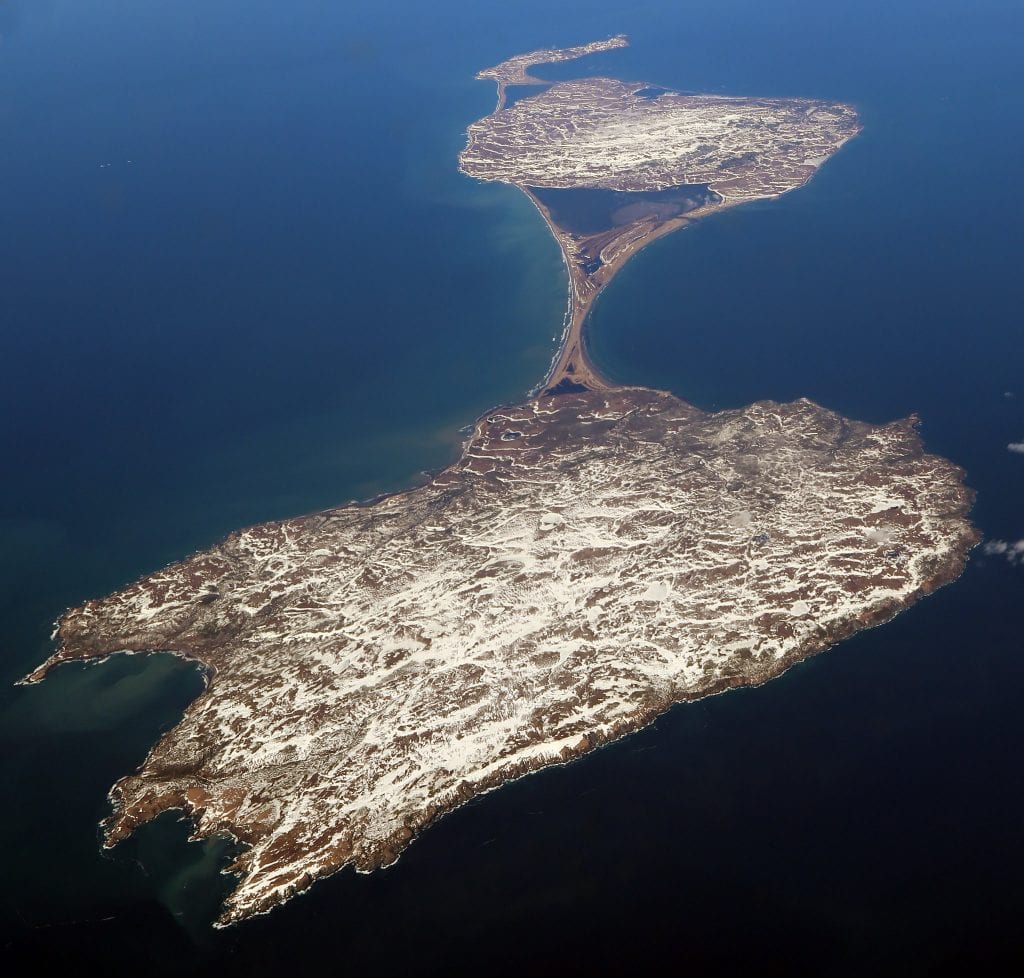
Visit Miquelon
So you’ve been to St. Pierre, but what about Miquelon? The hourglass-shaped northern island of the archipelago — technically two islands, Grande Miquelon and Langlade, connected by a narrow isthmus — is much larger in size than St. Pierre proper, but home to a fraction of the population (about 600 year-round residents compared to St. Pierre’s 5,500).
Most of the activity is in Miquelon-Langlade town, which is on the Grande Miquelon part of Miquelon island (I know, I know). Beyond that, there are lots of nature activities that can be booked locally.
To get to Miquelon, the ferry from St. Pierre runs to Miquelon-Langlade town. The journey takes 90 minutes, and costs 16 EUR ($18) one-way or 24 EUR ($27) round-trip for adults (10 EUR ($11)/13 EUR ($15) for children, disabled people, and seniors).
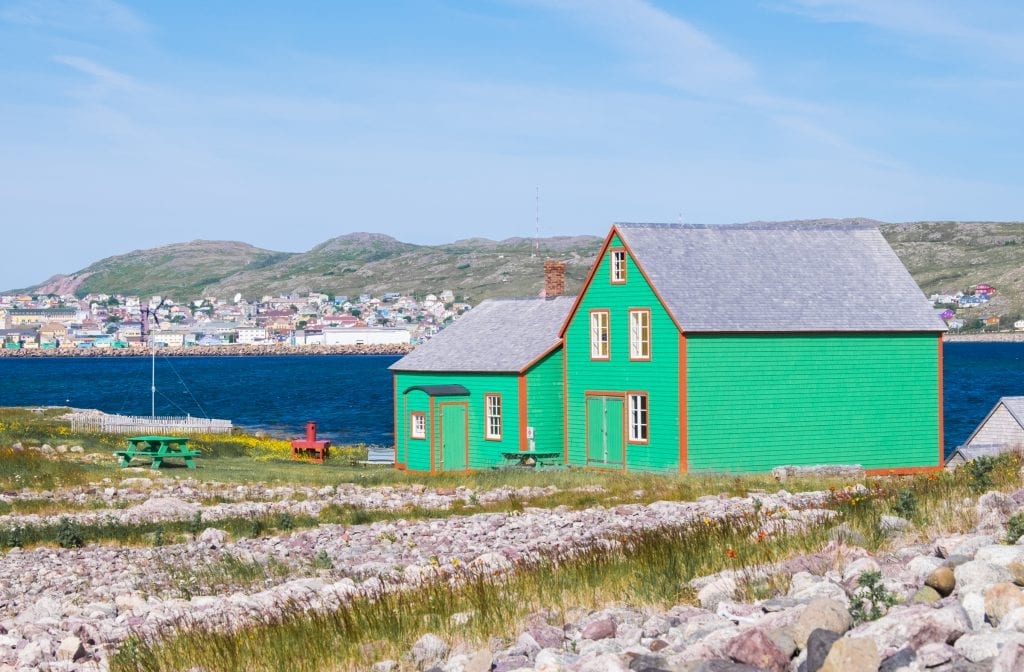
Best Time to Visit St. Pierre and Miquelon
You should only visit St. Pierre and Miquelon during the summer months, ideally July or August. Plain and simple. Yes, this is when everyone else visits — but that’s because there’s virtually no tourism industry outside this time of year.
If you visit in the winter, transportation runs far less often (including flights and ferries); most of the island’s tourism activities shut down, especially the outdoor activities; and the weather is harsh and cold.
For that reason, please book ahead as early as humanly possible. Accommodation, activities, even some dining reservations. It might be less than spontaneous, but activities in St. Pierre and Miquelon tend to fill up very quickly, and this will help you avoid disappointment.
Finally, keep in mind that summer in St. Pierre and Miquelon can have wild weather ranging from cold to mildly warm. Even in July, I needed a waterproof lined jacket at times. Bring lots of layers.
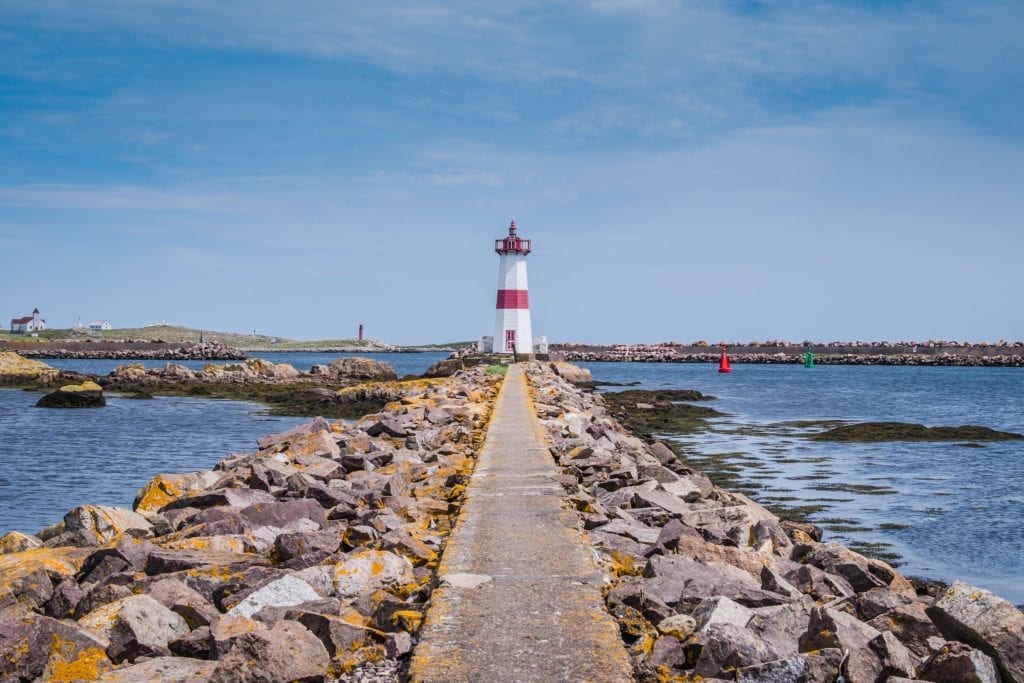
How much time do you need in St. Pierre and Miquelon?
Honestly, I don’t think you need more than a few days. I’ve seen people recommend two nights in St. Pierre and one night in Miquelon at least. Even so, I know folks who have spent a week or longer in St. Pierre and Miquelon and really enjoyed it!
You might be tempted to just come over for the day from Newfoundland, especially if you’re on a tight schedule — but I don’t recommend this. I was only here for a day trip, which wasn’t nearly long enough.
That said, if you’re visiting St. Pierre and Miquelon, you’re probably visiting Newfoundland as well — and honestly, you will find no shortage of amazing places to visit in Newfoundland, which is one of my favorite places in Canada.
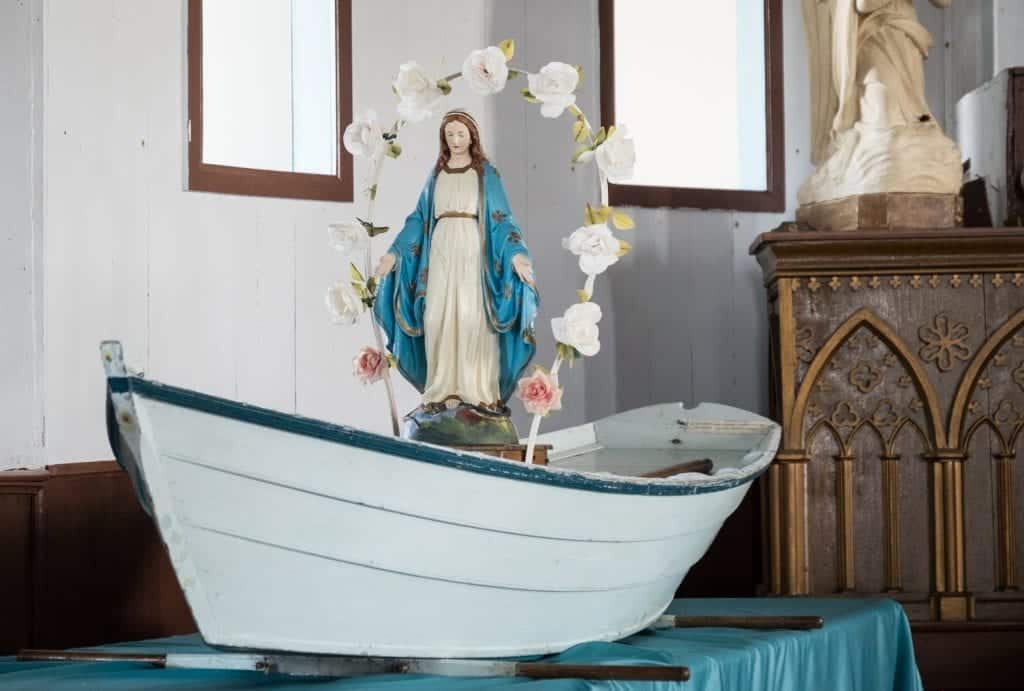
How to Get to St. Pierre and Miquelon
Most travelers to St. Pierre and Miquelon visit as part of a Newfoundland trip and take a ferry from the town of Fortune in Newfoundland, but it’s also possible to get here by flight.
St. Pierre and Miquelon are considered part of France, but not part of the Schengen Area.
How to Get to St. Pierre and Miquelon by Ferry
The ferry to St. Pierre and Miquelon runs from Fortune in Newfoundland. Fortune is about a four-hour drive from St. John’s.
Most ferries run to St. Pierre. The journey, via SPM Ferries, costs 45 EUR ($51) one-way or 73 EUR ($83) round-trip. Tickets for children 2-12 and disabled people are 35 EUR ($40) one-way and 49 EUR ($56) round-trip; tickets for seniors are 40 EUR ($45) one-way and 68 EUR ($77) round-trip. The journey takes about one hour.
There are also ferries direct from Fortune to Miquelon-Langlade town.
How to Get to St. Pierre and Miquelon by Air
St. Pierre has a small airport and a handful of flights to Atlantic Canada cities like St. John’s, Newfoundland, and Halifax, Nova Scotia; as well as Montréal in Québec. There are direct flights to Paris in the warmer months.
Check Skyscanner for the best flights to St. Pierre.
If you’re flying through Canada and ordinarily require a visa to Canada, you’ll need to secure a Canadian visa in advance.
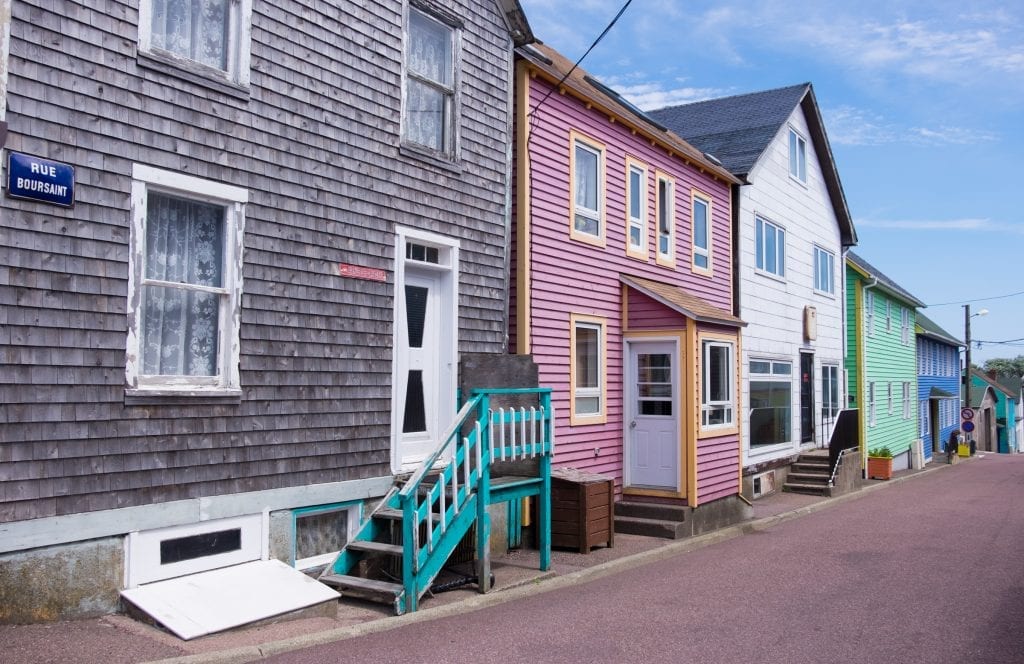
Where to Stay in St. Pierre and Miquelon
You’ll probably want to base in St. Pierre itself, at least for part of your trip. It’s small, walkable, and you’ll be in the center of everything! Just keep in mind that there are no large hotels here — expect small, local establishments. Expect properties to be more on the simple side, and most require a stay of two nights or longer in the summer months.
Here are some of the top-rated hotels in St. Pierre and Miquelon:
Nuits St. Pierre
If you’re looking for something special, Nuits St. Pierre is a beautiful boutique hotel in the heart of downtown St. Pierre. Rooms are beautifully decorated with cushy beds; breakfast is included. Bonus: it’s owned by the people who own the lovely cafe Les Délices de Joséphine. Rates from 148 EUR ($168).
Pension B&B Dodeman
If you’re looking for something simpler, Pension B&B Dodeman is on top of a hill, a 15-minute walk from downtown St. Pierre. Rooms are simple and some have low, slanted ceilings, but owners Bernard and Josette will take good care of you and make sure you have a great time. Rates from 65 EUR ($74).
Auberge de l’Île
If you’re staying in Miquelon for a night or two, Auberge de l’Île is a wonderful place to base. A B&B with six simple,wood-paneled rooms, this place makes a cozy spot to base in the rural part of Miquelon. Rates from 76 EUR ($86).
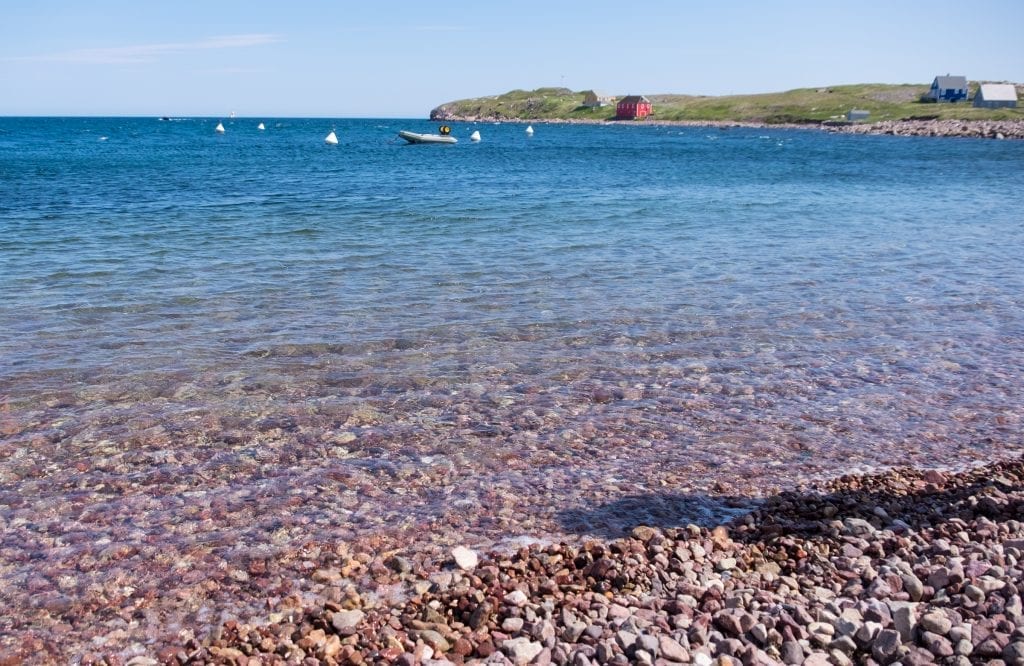
Travel Insurance for St. Pierre and Miquelon
One last note — it’s absolutely vital to have travel insurance before traveling to St. Pierre and Miquelon. If you get sick or injured on your trip, if you get robbed, or even if you have to be flown home for more care, travel insurance will protect you from financial ruin. I use and recommend World Nomads for trips to France and Canada.
Travel insurance will help you in your hour of need if you trip and break a bone while hiking the rocky coast; they will help you get medical care if you come down with appendicitis; and if you have to fly home due to a death in the immediate family, they can help you there.
As always, be sure to read your policy carefully and make sure it’s a fit for you. See what World Nomads covers here.
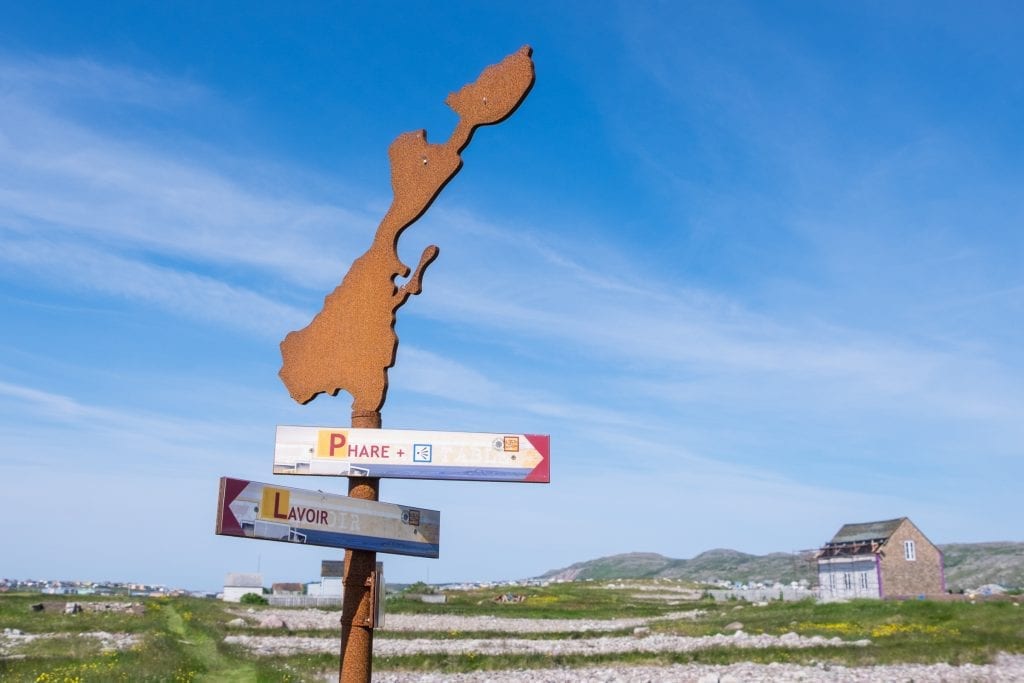
Is St. Pierre and Miquelon worth it?
If you’re planning a trip to Newfoundland, you might be asking whether it’s worth it making the drive down to Fortune and taking the ferry to St. Pierre.
I think St. Pierre and Miquelon is worth it — as long as you do it right. Visit in the summer. Stay for a few days. Book everything months ahead. Get in some cultural activities and some nature activities. See Miquelon as well as St. Pierre. Make sure you understand the strict closures during mealtimes. And do not miss Île aux Marins!
Do all that — and I think you’ll be very happy you visited.
More Atlantic Canada Adventures:
- Travel to Newfoundland and You’ll Never Want to Leave
- Visiting the Magical Îles-de-la-Madeleine of Québec
- The Cabot Trail: Nova Scotia’s Most Beautiful Road Trip
- One Week in Nova Scotia: Exploring the South Coast
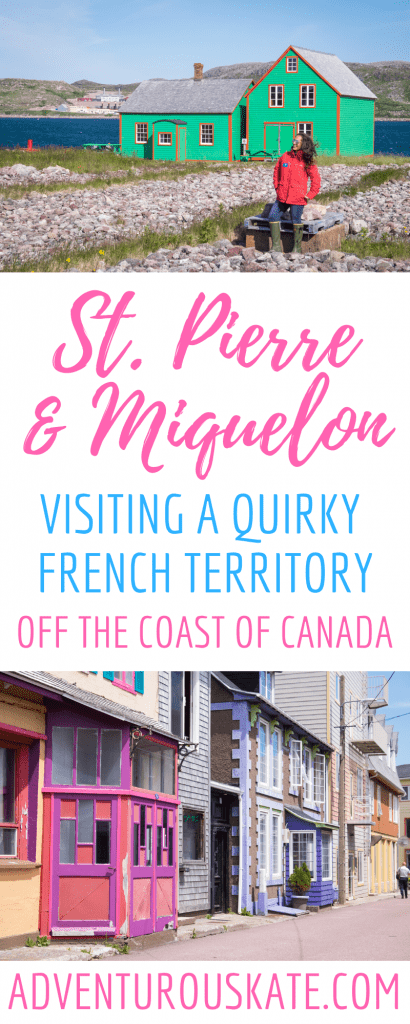
Does St. Pierre and Miquelon look like your kind of place? Share away!